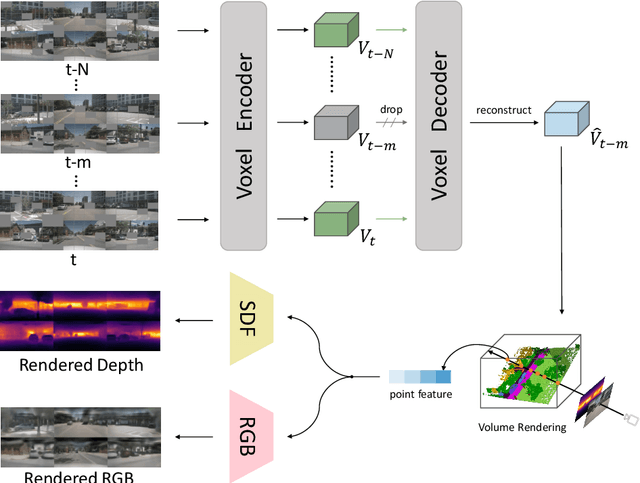Jialv Zou
OmniMamba: Efficient and Unified Multimodal Understanding and Generation via State Space Models
Mar 11, 2025Abstract:Recent advancements in unified multimodal understanding and visual generation (or multimodal generation) models have been hindered by their quadratic computational complexity and dependence on large-scale training data. We present OmniMamba, the first linear-architecture-based multimodal generation model that generates both text and images through a unified next-token prediction paradigm. The model fully leverages Mamba-2's high computational and memory efficiency, extending its capabilities from text generation to multimodal generation. To address the data inefficiency of existing unified models, we propose two key innovations: (1) decoupled vocabularies to guide modality-specific generation, and (2) task-specific LoRA for parameter-efficient adaptation. Furthermore, we introduce a decoupled two-stage training strategy to mitigate data imbalance between two tasks. Equipped with these techniques, OmniMamba achieves competitive performance with JanusFlow while surpassing Show-o across benchmarks, despite being trained on merely 2M image-text pairs, which is 1,000 times fewer than Show-o. Notably, OmniMamba stands out with outstanding inference efficiency, achieving up to a 119.2 times speedup and 63% GPU memory reduction for long-sequence generation compared to Transformer-based counterparts. Code and models are released at https://github.com/hustvl/OmniMamba
MIM4D: Masked Modeling with Multi-View Video for Autonomous Driving Representation Learning
Mar 13, 2024



Abstract:Learning robust and scalable visual representations from massive multi-view video data remains a challenge in computer vision and autonomous driving. Existing pre-training methods either rely on expensive supervised learning with 3D annotations, limiting the scalability, or focus on single-frame or monocular inputs, neglecting the temporal information. We propose MIM4D, a novel pre-training paradigm based on dual masked image modeling (MIM). MIM4D leverages both spatial and temporal relations by training on masked multi-view video inputs. It constructs pseudo-3D features using continuous scene flow and projects them onto 2D plane for supervision. To address the lack of dense 3D supervision, MIM4D reconstruct pixels by employing 3D volumetric differentiable rendering to learn geometric representations. We demonstrate that MIM4D achieves state-of-the-art performance on the nuScenes dataset for visual representation learning in autonomous driving. It significantly improves existing methods on multiple downstream tasks, including BEV segmentation (8.7% IoU), 3D object detection (3.5% mAP), and HD map construction (1.4% mAP). Our work offers a new choice for learning representation at scale in autonomous driving. Code and models are released at https://github.com/hustvl/MIM4D
Circuit as Set of Points
Oct 26, 2023



Abstract:As the size of circuit designs continues to grow rapidly, artificial intelligence technologies are being extensively used in Electronic Design Automation (EDA) to assist with circuit design. Placement and routing are the most time-consuming parts of the physical design process, and how to quickly evaluate the placement has become a hot research topic. Prior works either transformed circuit designs into images using hand-crafted methods and then used Convolutional Neural Networks (CNN) to extract features, which are limited by the quality of the hand-crafted methods and could not achieve end-to-end training, or treated the circuit design as a graph structure and used Graph Neural Networks (GNN) to extract features, which require time-consuming preprocessing. In our work, we propose a novel perspective for circuit design by treating circuit components as point clouds and using Transformer-based point cloud perception methods to extract features from the circuit. This approach enables direct feature extraction from raw data without any preprocessing, allows for end-to-end training, and results in high performance. Experimental results show that our method achieves state-of-the-art performance in congestion prediction tasks on both the CircuitNet and ISPD2015 datasets, as well as in design rule check (DRC) violation prediction tasks on the CircuitNet dataset. Our method establishes a bridge between the relatively mature point cloud perception methods and the fast-developing EDA algorithms, enabling us to leverage more collective intelligence to solve this task. To facilitate the research of open EDA design, source codes and pre-trained models are released at https://github.com/hustvl/circuitformer.
 Add to Chrome
Add to Chrome Add to Firefox
Add to Firefox Add to Edge
Add to Edge